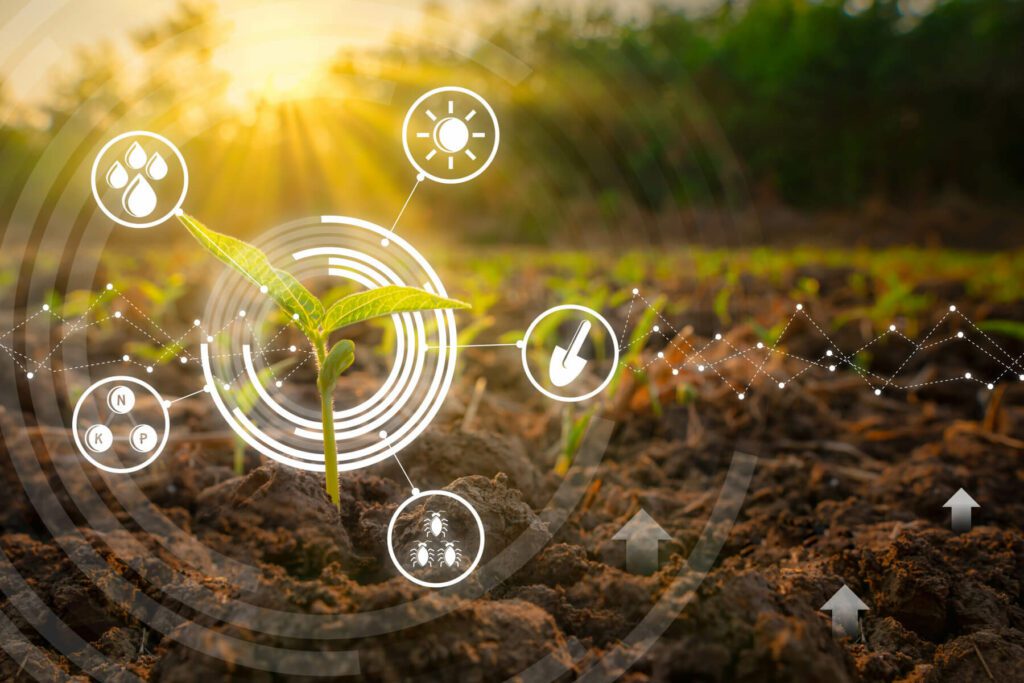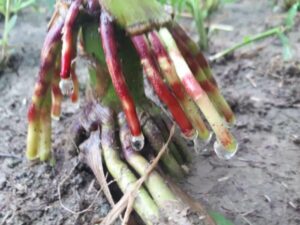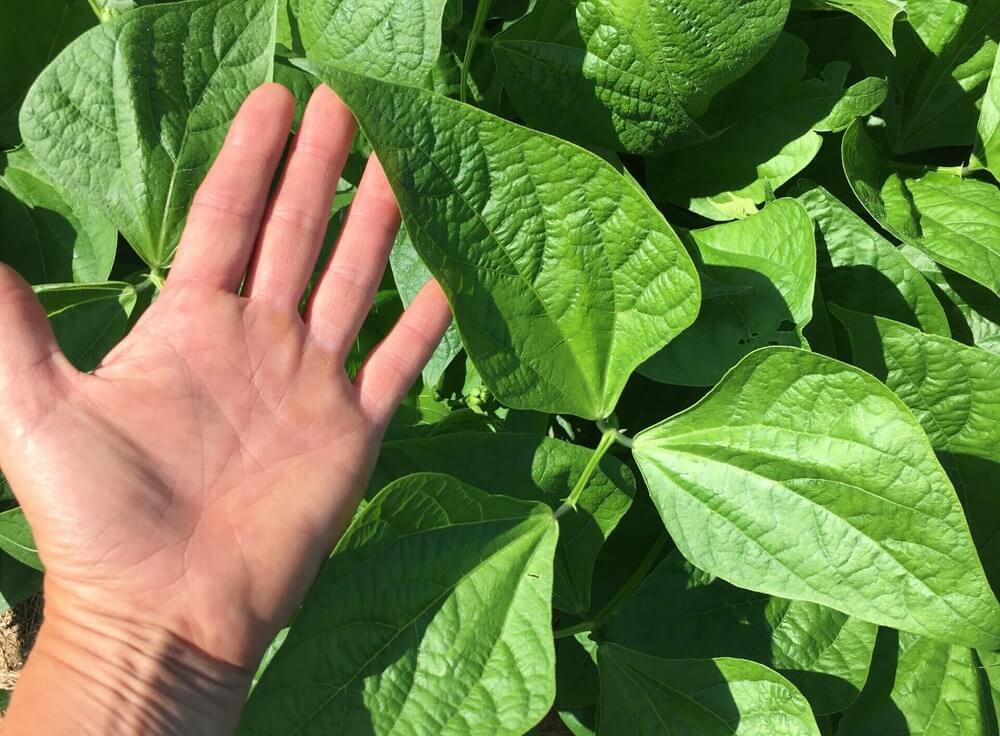Photosynthesis is incredibly important – in fact, without it, life on Earth as we know it could not exist. It is the mechanism by which solar energy is converted to chemical energy in the forms of sugars, starches and fats. That chemical energy then fuels nearly every living organism on our beautiful planet and is the foundation of every vitamin, complex nutrient, and biologically active compound that impacts our growth, health, and longevity. It is also how atmospheric oxygen levels are replenished, carbon dioxide is sequestered, fertilizer “sponges” are initiated in the soil, nutrient release is triggered in the soil, lifeless mineral deposits are converted to living, life-giving soil, and atmospheric nitrogen is fixed.
 So, what is photosynthesis, exactly? How does it impact all of those processes? Can it be sped up or slowed down? Can we influence it? What can we do to reap its benefits? Let’s dig into the details!
So, what is photosynthesis, exactly? How does it impact all of those processes? Can it be sped up or slowed down? Can we influence it? What can we do to reap its benefits? Let’s dig into the details!
Simply put, photosynthesis is the combination of carbon dioxide and water, with the use of sunlight by chlorophyll, to produce sugar (energy) and oxygen. In reality, it’s a lot more complicated than that. A lot. If you’d like to see a “simplified” (and entertaining) 10-minute account, check out the video Photosynthesis is WAY Crazier than you Think! by The Science Asylum on YouTube.
The sugars produced by photosynthesis fuel virtually all life on earth. It’s what gives every living thing the energy and/or building blocks to make everything else, including more complex sugars, starches, fibers, fats, vitamins, phytochemicals, proteins, etc. Virtually every life form that breathes uses oxygen (including plants, at night) and releases carbon dioxide. If plants weren’t “exhaling” oxygen through photosynthesis, we would eventually deplete atmospheric oxygen levels to the point where oxygen-dependent life would no longer exist. Photosynthesis literally replenishes the air we breathe.
 Photosynthesis is also how plants convert gaseous carbon (CO2) into liquid carbon (sugars). And they do this for free, seven days a week! It’s that liquid carbon that is converted to root exudates and pumped into the soil to feed the biology. Just like we absorb nutrients freed up by the microbes in our gut, so too do the plants’ roots absorb nutrients freed up by the microbes in the soil around their roots. Some organisms deliver the nutrients directly to the plant in exchange for energy from the plant. Arbuscular mycorrhizal fungi and rhizobia are two such classes that you may be familiar with. It is by feeding the microorganisms in the rhizosphere that minerals and microbial metabolites are made available to the plants. It is also by the action of the microorganisms on the products of photosynthesis (residues and exudates) that the carbon can be converted to another solid form: humus. Fungus-derived humus can be sequestered and held stable for several decades. These stable humic compounds can hold onto nutrients, preventing losses via flashing and water transport, while still allowing relatively easy access to those nutrients by plants and microorganisms. In fact, some nutrients (nitrates, phosphates, sulfates, borates, etc.) can only be retained by humic substances and can’t be retained by the minerally charged fraction of the soil. As a general rule of thumb, each 1% of soil organic matter is capable of holding onto 1″ of rainfall. So retaining mobile nutrients and managing your annual precipitation fluctuations can be improved by managing photosynthesis.
Photosynthesis is also how plants convert gaseous carbon (CO2) into liquid carbon (sugars). And they do this for free, seven days a week! It’s that liquid carbon that is converted to root exudates and pumped into the soil to feed the biology. Just like we absorb nutrients freed up by the microbes in our gut, so too do the plants’ roots absorb nutrients freed up by the microbes in the soil around their roots. Some organisms deliver the nutrients directly to the plant in exchange for energy from the plant. Arbuscular mycorrhizal fungi and rhizobia are two such classes that you may be familiar with. It is by feeding the microorganisms in the rhizosphere that minerals and microbial metabolites are made available to the plants. It is also by the action of the microorganisms on the products of photosynthesis (residues and exudates) that the carbon can be converted to another solid form: humus. Fungus-derived humus can be sequestered and held stable for several decades. These stable humic compounds can hold onto nutrients, preventing losses via flashing and water transport, while still allowing relatively easy access to those nutrients by plants and microorganisms. In fact, some nutrients (nitrates, phosphates, sulfates, borates, etc.) can only be retained by humic substances and can’t be retained by the minerally charged fraction of the soil. As a general rule of thumb, each 1% of soil organic matter is capable of holding onto 1″ of rainfall. So retaining mobile nutrients and managing your annual precipitation fluctuations can be improved by managing photosynthesis.
Photosynthesis is also how atmospheric nitrogen is made available to plants, either through a captive symbiont or by free-living nitrogen fixers. While blue-green algae (cyanobacteria) fix their own nitrogen and photosynthesize (consider the impact of herbicides on this mode of nitrogen fixation), all other nitrogen fixing organisms trade carbon (sugar) from the plants for nitrogen. Depending on the photosynthetic capacity of the plants, this can contribute in excess of 200 pounds of nitrogen per acre – more than enough for a meaningful corn crop.
Factors Affecting Photosynthesis
The amount of sugar that can be produced via photosynthesis is highly variable and dependent on many factors, some of which will be within your control, while some will not. It is important to understand these factors and their impact so that you can understand both the potential and the limitations of a given situation in any given growing season.
- Water is not only essential for photosynthesis, but it’s essential to keep your plants alive. Consider water management strategies such as no-till, cover crops, residue cover and irrigation to optimize water availability during the growing season.
- Sunlight is mostly out of your control unless you are in a greenhouse environment. Having said that, be aware that cloud cover (or smoke from large forest/brush fires) can impact the amount of solar energy reaching your plants. The time of year and the angle of the sun can also impact the intensity of sunlight and the capture efficiency of chlorophyll. Stratospheric reflection of solar energy will also reduce the amount of energy available to your plants. This can be impacted by volcanic eruptions and stratospheric aerosol injection (SAI, admittedly in use by the US, China and Italy, to name a few). Ensuring a living root/plant for as many days as possible will help maximize the sunlight captured.
- The optimum CO2 level for most plants is 1200-1500 ppm. It’s important to have a biologically active soil that is cycling evening exudates and giving most of it back to the plant in the form of CO2, allowing the plant to use the same CO2 repeatedly (obviously taking in additional CO2 throughout the day) in order to prompt the soil microorganisms to free up additional nutrients. A small boost of sugar/molasses applied to the spring soil after the break of dormancy can help get things started.
- Chlorophyll is what makes your plants green. The more chlorophyll you have, the higher the plant’s capacity to produce sugars. Magnesium, nitrogen and iron are used to build it. Obviously these three nutrients are essential. Ensuring adequate levels of phosphorus can help maintain optimum levels of ATP in the plant cells and keep the sugar machinery going.
- Temperature also affects the process. Photosynthesis slows down when temperatures are lower and speeds up when it is warmer. Extremes notwithstanding, not much happens below about 42F or above 85-90F.
- Plant type (corn versus wheat, for example), growth stage (senescing plants photosynthesize very little), leaf surface (number, surface area and rigidity/presentation) and condition (nutritional status, % damaged) all come into play when considering sugar production. Expect different plant species to produce different levels of sugars at different stages of growth.
- Manganese is used in the water-splitting phase of photosynthesis and should be supplemented if deficient; however, because of its tendency to oxidize and become unavailable, foliar applications are most efficient and effective.
- Boron is critical for transporting sugars from the chloroplasts to all other parts of the plant (including fruit/seeds, growing shoots and growing/exuding roots). Inadequate boron levels can result in fewer flowers, deformed growth and reduced exudates. By reducing the food available to the rhizosphere, the nutrients made available to the plant are necessarily reduced, resulting in inferior chlorophyll production which in turn reduces photosynthesis. Avoid this negative feedback loop by paying attention to soil and tissue boron levels. In-season deficiencies are effectively addressed through foliar feeding.
- Zinc is needed for large leaf size. The larger your solar panel, the more solar energy you can collect, and the more sugar you can produce. It’s as simple as that. Unlike most other metallic minerals, zinc doesn’t need to be in a reduced form and can be both taken up and utilized by plants in either a reduced or oxidized form and as such is well suited to soil applications while foliars should be used in-season.
 Summary
Summary
Photosynthesis is the foundation for life on Earth. Our nutrition and health are dependent on the products and by-products of photosynthesis. It is essential for the stability of atmospheric oxygen levels. It fuels the microorganisms that make nutrients available to plants and, subsequently, higher life forms (including us). The amount of nutrients available to plants is a function of how well those microorganisms are fed. The humic fraction of the soil, powered by photosynthesis, acts like a nutrient sponge that can help improve nutrient efficiency and storage in the soil while modulating soil moisture levels. Photosynthesis drives nitrogen fixation, reducing or eliminating the need for nitrogen fertilizers. It is important to understand what things can affect photosynthetic capacity and which of those we can influence. Monitoring soil and plant nutrient levels and addressing them via amendments and foliar applications can be beneficial for maximizing photosynthetic capacity and improving plant health, yield and quality.
This article first appeared in the 9th Edition of Green Cover's Soil Health Resource Guide.
Also check out the 11th edition, our latest Soil Health Resource Guide, over 90 pages packed with scientific articles and fascinating stories from soil health experts, researchers, farmers, innovators, and more! All as our complimentary gift to you, a fellow soil health enthusiast!

